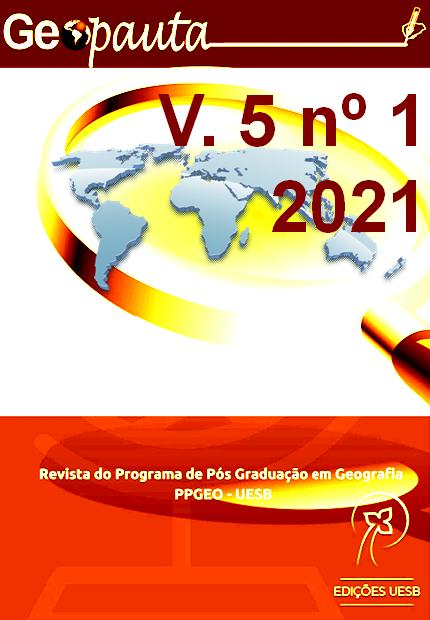Santo Antônio de Jesus / BA and the institutionalization of neighborhoods: the challenges of urban planning in a medium-sized city
DOI:
https://doi.org/10.22481/rg.v5i1.6454Keywords:
Bairro , Cidade Média , Planejamento Urbano , PolíticaAbstract
This article aims to present the work carried out in the city of Santo Antônio de Jesus in the identification, characterization and proposition of division of districts. The absence of formal intra-urban socio-spatial units was, along with the lack of a register of public places, one of the city's highest urban planning liabilities recognized as average. For that, we constructed a theoretical framework based on Lefebvre (1973), Certeau (2002), Seabra (2003; 2004), among other theorists. In this sense, our work was to raise, through a specific methodology, the already consolidated representations of neighborhoods by the population from the toponymy of streets and localities and, thus, propose a division of neighborhoods of the city. As a result, we came to the formulation of a proposal of twenty-four neighborhoods.
Downloads
Metrics
References
BEZERRA, Josué Alencar. Como definir um bairro? Uma breve revisão. In: Geotemas. Pau dos Ferros/Rio Grande do Norte, v. 1, n.1, p. 21-31, jan/jul., 2011.
BRASIL. Lei 10527, de 10 de julho de 2001 (Estatuto das Cidades). Publicada no Diário Oficial da União, Brasília, DF, 10 jul. de 2001.
BRASIL. Constituição da República Federativa do Brasil. 1988. Publicada no Diário Oficial da União, Brasília, DF, 05 out. de 1988.
CARLOS, Ana Alessandri. Fani. Espaço-tempo na metrópole: a fragmentação da vida cotidiana. São Paulo: Contexto, 2001.
CERTEAU, Michel de, GIARD, Luce & MAYOL, Pierre. A invenção do cotidiano 2 – habitar, cozinhar. 4 ed. Petrópolis, RJ: Vozes, 2002.
DAMIANI, Amélia Luisa. As contradições do espaço: da lógica (formal) à (lógica) dialética, a propósito do espaço. In: DAMIANI, Amélia Luisa, CARLOS, Ana Fani Alessandri, SEABRA, Odette Carvalho de Lima. O espaço no fim do século: a nova raridade. São Paulo: Contexto, 1999.
IBGE. Classificação e caracterização dos espaços rurais e urbanos do Brasil: uma primeira aproximação. Rio de Janeiro: FIBGE, 2017.
LEFEBVRE, Henri. O direito à cidade. São Paulo: Centauro, 2001.
LEFEBVRE, Henri. Do rural ao urbano. 2 ed. Barcelona: Península, 1973.
MOTA, Antônio Andrade. A inserção dos condomínios fechados no espaço urbano de Santo Antônio de Jesus: apropriação da natureza, produção do espaço e legislação. (Dissertação de Mestrado). Programa de Pós-graduação em Geografia da Universidade Federal da Bahia, 2009.
ROLNIK, Raquel. Planejamento Urbano nos Anos 90: novas perspectivas para velhos temas. In: Luís Ribeiro; Orlando Júnior. (Org.). Globalização, Fragmentação e Reforma Urbana - o futuro das cidades brasileiras na crise. Rio de Janeiro: Civilização Brasileira, 1994.
SANTOS JUNIOR, Orlando Alves dos; MONTANDON, Daniel Todtmann (Orgs.). Os planos diretores municipais pós-estatuto da cidade: balanço crítico e perspectivas. Rio de Janeiro: Letra Capital: Observatório das Cidades: IPPUR/UFRJ, 2011.
SEABRA, Odette Carvalho de Lima. Urbanização e fragmentação: cotidiano e vida de bairro na metamorfose da cidade em metrópole a partir do bairro do Limão. São Paulo (2003). Tese de livre docência. Faculdade de Filosofia, Letras e Ciências Humanas/USP.
SEABRA, Odette Carvalho de Lima. Territórios do uso: Cotidiano e modo de vida. In: CIDADES. v. 1, n. 2, 2004, p. 181-206.
SPOSITO, Maria Encarnação Beltrão. Cidades médias e pequenas: as particularidades da urbanização brasileira. In: DIAS, Patrícia Chame, LOPES, Diva Maria Ferlin. Cidades médias e pequenas: desafios e possibilidades do planejamento e gestão. Salvador: SEI, 2014.
SOUZA, Marcelo Lopes de. ABC do desenvolvimento urbano. 6 ed. Rio de Janeiro: Bertrand Brasil, 2011.
VILLAÇA, Flávio. Uma contribuição para a história do planejamento urbano no Brasil. O Processo de urbanização no Brasil. São Paulo: Edusp, 2004.
Downloads
Published
How to Cite
Issue
Section
License
Copyright (c) 2021 from the Geopauta Journal and the Author(s)

This work is licensed under a Creative Commons Attribution 4.0 International License.
Copyright
Authors must retain unrestricted copyright and grant the Geopauta the first publication with the work simultaneously licensed under CC BY which allows others to share with recognition of each author's authorship in the initial publication in this Journal
Intellectual Property and Terms of Use
Geopauta adopts the Free Access policy in accordance with Open Access - OAC recommended by DOAJ and in accordance with the SciELO Criteria, under a Creative Commons CC By Attribution 4.0 International License, allowing immediate free access to the work and allowing any user to read, download, copy, distribute, print, search or link to the full texts of the articles, track them for indexing, pass them as data to software or use them for any other legal purpose.
Geopauta attributes the CC BY. license. where it is allowed without restrictions:
Share — copy and redistribute the material in any medium or format for any purpose, even commercial. as long as they give due credit for the original creation.
Adapt — remix, transform, and create from the material for any purpose, even commercial purposes, as long as due credit is given for the original creation.












